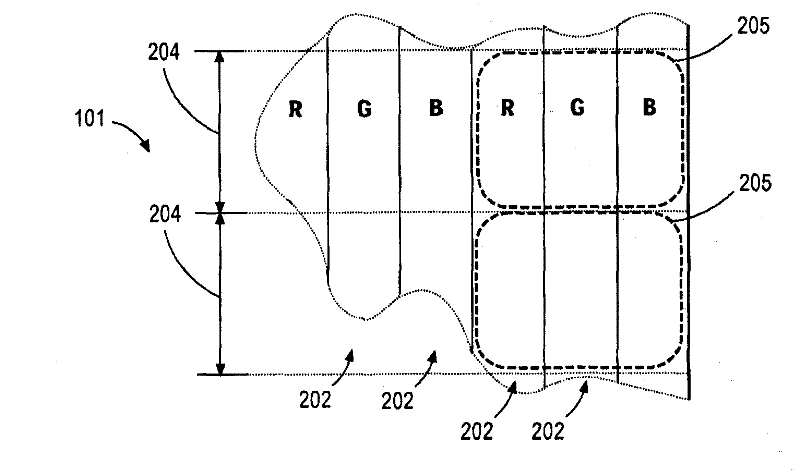Neighborhood brightness matching for uniformity of tiled displays
A splicing display and brightness technology, which is applied to static indicators, cathode ray tube indicators, image reproducers using projection devices, etc., can solve problems such as uneven brightness of splicing display systems
- Summary
- Abstract
- Description
- Claims
- Application Information
AI Technical Summary
Problems solved by technology
Method used
Image
Examples
Embodiment Construction
[0020] figure 1 It is a schematic perspective view of a video wall 200 that can benefit from embodiments of the present invention. Video wall system 200 includes a plurality of tiles 250 positioned to form a single display screen 260 for a viewer 270 . Each tile 250 is a light-based electronic display device, such as a laser phosphor display (LPD), light emitting diode (LED) digital light processor (DLP), or LED liquid crystal display (LCD) device, and each tile configured to work with other tiles 250 to produce a single, associated image for a viewer 270 . Each tile 250 also includes an illuminance detector (not shown for clarity) for dynamically monitoring the output intensity of the light source or light sources in the tile 250. figure 1 shown in ). Illuminance is a photometric measurement of the luminous intensity per unit area of light propagation in a given direction. The tiled display system 200 includes a central controller 280 configured to receive illuminance d...
PUM
 Login to View More
Login to View More Abstract
Description
Claims
Application Information
 Login to View More
Login to View More - R&D
- Intellectual Property
- Life Sciences
- Materials
- Tech Scout
- Unparalleled Data Quality
- Higher Quality Content
- 60% Fewer Hallucinations
Browse by: Latest US Patents, China's latest patents, Technical Efficacy Thesaurus, Application Domain, Technology Topic, Popular Technical Reports.
© 2025 PatSnap. All rights reserved.Legal|Privacy policy|Modern Slavery Act Transparency Statement|Sitemap|About US| Contact US: help@patsnap.com



